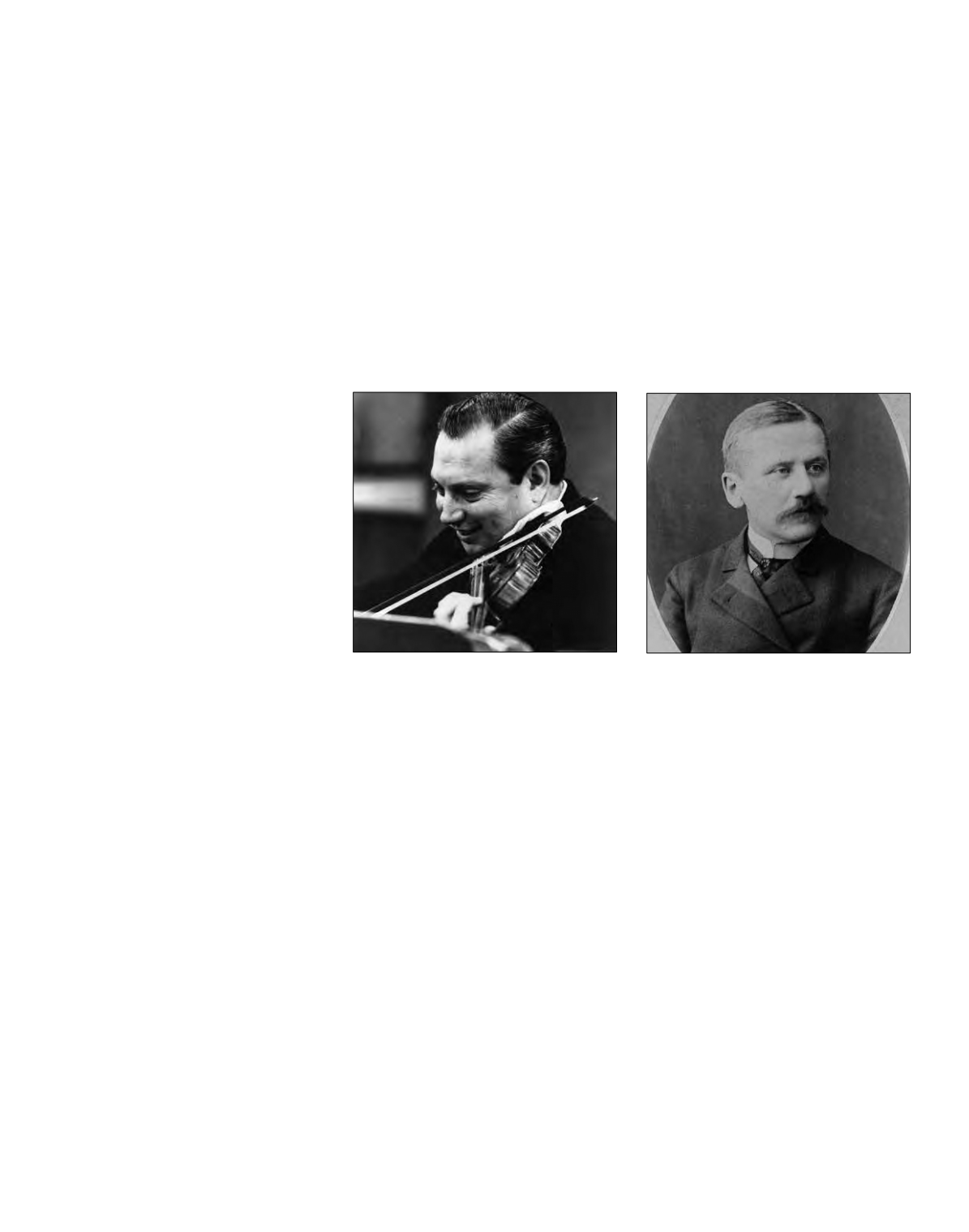

solo violin serves as the evening’s elected master
of ceremonies (
simposiarca
), guiding the festivi-
ties but also synopsizing the various viewpoints
on love.
Though the composer denied any “literal pro-
gram” in his orchestral score, the personali-
ty contrasts between, and sometimes within,
movements mirror the philosophical positions
taken by the diverse group of speakers. In the
opening movement, listeners encounter a dia-
logue between Phaedrus (ca. 444–393 BCE), an
aristocrat and former student of Socrates, and
Pausanias (fl. 420 BCE), the lover of the extraor-
dinarily handsome poet Agathon. Next follow
three monologues, one each by the comic play-
wright and poet Aristophanes (ca. 446–ca. 386
BCE); Phaedrus’s close friend, the physician
Eryximachus (ca. 448–late 5th/early 4th centu-
ry BCE); and the tragic poet Agathon (ca. 448–
ca. 400 BCE), whose triumph in the Lenaia—an
Athenian festival, including a dramatic compe-
tition, given annualy in honor of Dionysus—in
416 BCE occasioned this symposium. The final
movement contains a dialogue between the
philosopher Socrates (ca. 415–4th century BCE)
and his former student, the statesman, orator,
and general Alcibiades (ca. 450–404 BCE). In
Serenade (after Plato’s Symposium)
, arguably
Bernstein’s most consistent and well-conceived
instrumental work, the composer achieves mu-
sical cohesion by imposing “a system whereby
each movement evolves out of elements in the
preceding one.”
On August 8, 1954, the day after completing the
score, Bernstein outlined the “guideposts” in
Serenade
, which are summarized below:
I.
Phaedrus: Pausanius
(Lento; Allegro).
Phaedrus opens the symposium with a
lyrical oration in praise of Eros, the god
of love (fugato, begun by the solo violin).
Pausanias continues by describing the du-
ality of lover and beloved. This is expressed
in a classical sonata-allegro, based on the
material of the opening fugato.
II.
Aristophanes
(Allegretto). Aristophanes
does not play the role of clown in this
dialogue, but instead that of the bedtime
storyteller, invoking the fairytale mytholo-
gy of love.
III.
Eryximachus
(Presto). The physician
speaks of bodily harmony as a scientific
model for the workings of love-patterns.
This is an extremely short fugato scherzo,
born of a blend of mystery and humor.
IV.
Agathon
(Adagio). Perhaps the most
moving speech of the dialogue, Agathon’s
panegyric embraces all aspects of love’s
powers, charms, and functions. This move-
ment is a simple three-part song.
V.
Socrates
:
Alcibiades
(Molto tenuto;
Allegro molto vivace). Socrates describes
his visit to the seer Diotima, quoting her
speech on the demonology of love. This
is a slow introduction of greater weight
than any of the preceding movements, and
serves as a highly developed reprise of the
middle section of the Agathon movement,
thus suggesting a hidden sonata-form. The
famous interruption of Alcibiades and his
band of drunken revelers ushers in the
Alle-
gro
, which is an extended rondo ranging in
spirit from agitation through jig-like dance
music to joyful celebration. If there is a hint
of jazz in the celebration, I hope it will not
be taken as anachronistic Greek party mu-
sic, but rather the natural expression of a
contemporary American composer imbued
with the spirit of that timeless dinner party.
The Koussevitzky Foundation commissioned
the
Serenade (after Plato’s Symposium)
, which is
dedicated “To the beloved memory of Serge and
Natalie Koussevitzky.” Bernstein conducted the
premiere on September 12, 1954, at the Teatro La
Fenice in Venice, Italy, with the Israel Philhar-
monic Orchestra and violinist Isaac Stern.
PETER ILYICH TCHAIKOVSKY (1840–93)
Symphony No. 6 in B minor, op. 74
(“Pathétique”)
Scored for three flutes and piccolo, two oboes, two
clarinets, two bassoons, four horns, two trumpets,
three trombones, tuba, timpani, bass drum,
cymbals, tam-tam, and strings
“It will be quite conventional and no surprise if
this symphony is abused and unappreciated—
that has happened before. But I definitely find it
my very best and in particular the most sincere
of all my compositions. I love it as I have never
loved any of my musical children.” Decades-long
experience with Russian audiences conditioned
Tchaikovsky to a typical pattern of reception:
initial rejection, artistic depression, followed by
belated acclaim. True to pattern, the Symphony
No. 6 failed to inspire performers or audience at
the composer-led premiere on October 28, 1893.
Incidents over the next few days, however, al-
tered forever its significance. The morning af-
ter the first performance, Tchaikovsky awoke
to mull over a title for his new work. Quickly,
he rejected the generic “Symphony No. 6,” and
then also his working title “Program Sympho-
ny.” (The composer maintained ultimate secrecy
over its programmatic inspiration.) His brother
Modest next proposed “tragic,” which was re-
jected, then the Russian adjective “
patetichesky
,”
a term that denotes great pathos. “ ‘Excellent,
Modya, bravo,
patetichesky
!’ and before my eyes
he wrote on the score the title by which it has
since been known,” Modest later recounted.
Tchaikovsky ventured out to operatic and con-
cert performances over the next several nights.
On November 2, troubled with stomachaches,
he took morning breakfast and tea as usual.
Physical discomfort increased over lunch, when
he allegedly drank a glass of unboiled Saint Pe-
tersburg water, a risky act during the cholera
season. The next few days witnessed a steady de-
cline in his health. On November 6, Tchaikovsky
died. The attending doctor reported “thorough-
ly characteristic” symptoms of cholera. Howev-
er, rumors that Tchaikovsky committed suicide
through poisoning—rather than endure public
allegations of homosexuality—circulated even
during the fatal illness. Russian records officially
list the cause of death as “unclear.”
When performed a second time under Eduard
Nápravnik (November 18), the audience heard
the Symphony No. 6 in light of the recent,
devastating events. They realized too late its
underlying value, conveyed so deeply in rich,
penetrating orchestral sonorities. All felt the
momentous loss of a great Russian artist, and
this pathos-laden work reverberated as his own
eulogy.
Isaac Stern (1963)
Modest Tchaikovsky (1891)
RAVINIA MAGAZINE | JULY 9 – JULY 15, 2018
106









